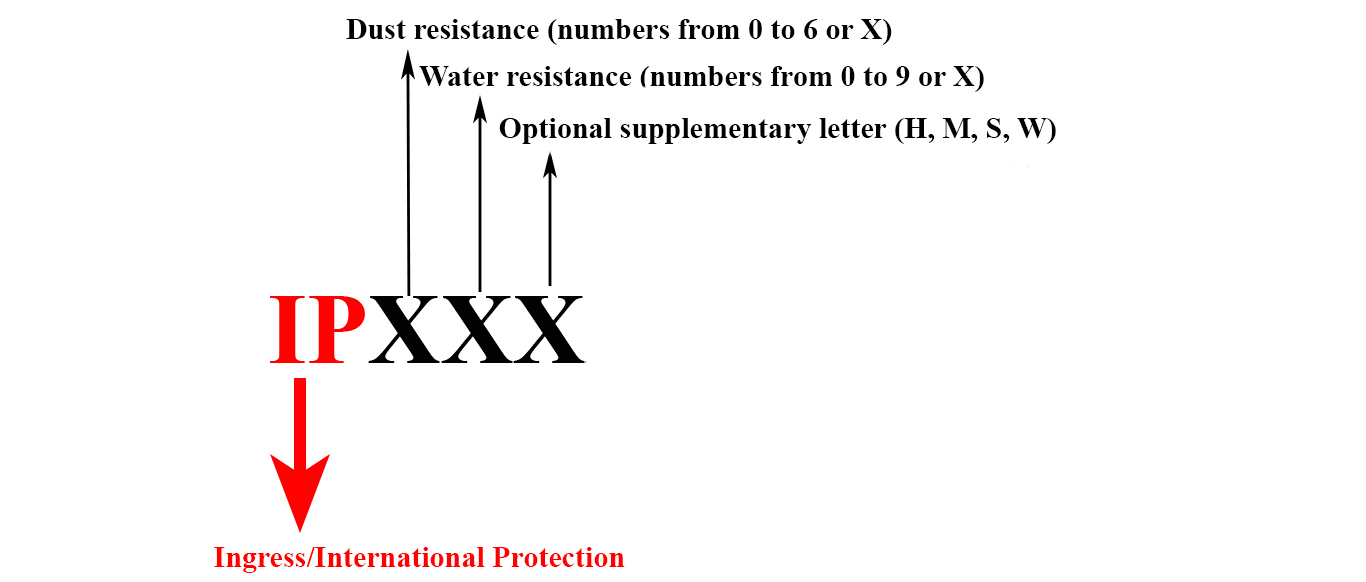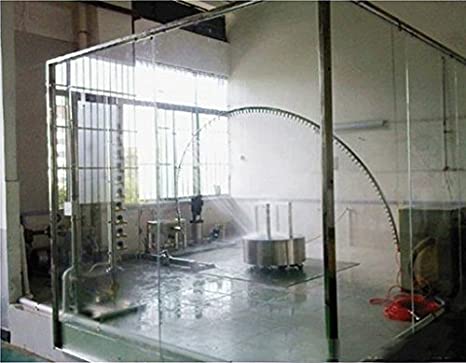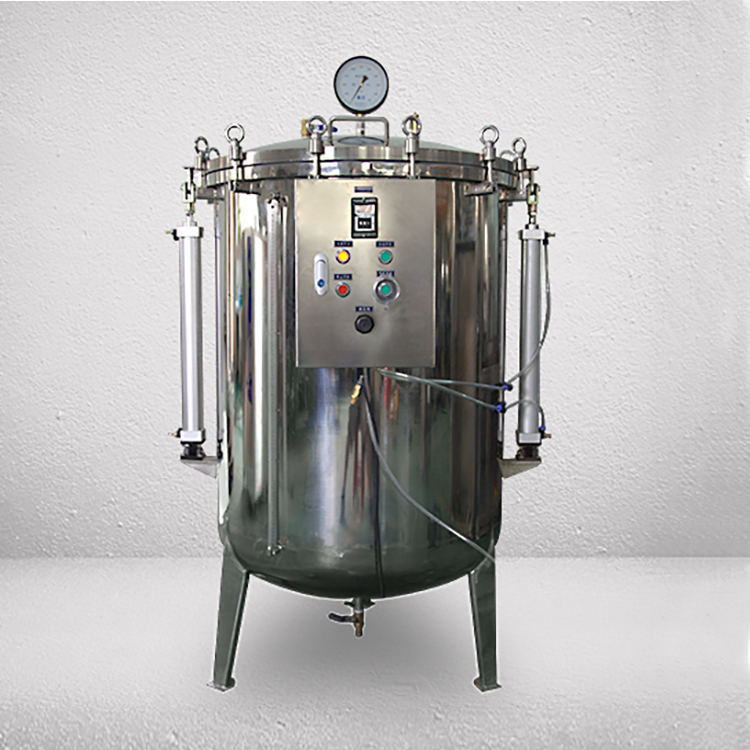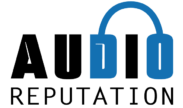AudioReputation is reader-supported. When you buy through links on our site, we may earn an affiliate commission Learn More
Whenever looking for waterproof or water-resistant equipment, whether it’s audio equipment (headphones, speakers) or any kind of electrical/electronic equipment, the most important thing to look for and the thing that can actually tell you the level of water resistance is the IPX rating. In our previous articles, we dealt with IPX ratings in general as well as IPX4 (splash-proof) and IPX7 (waterproof). Today we’re going to discuss the meaning and importance of an IPX8 waterproof rating.
Table of Contents
- IP/IPX Ratings – The Basics
- What is The Meaning of Different IPX Ratings?
- What is the Difference Between the IPX7 Waterproof Rating and IPX8 Waterproof Rating?
- Why Are IPX Ratings So Important?
- IPX8 Testing Procedures and Standards
- What devices are IPX8 Certified?
- Factors to Consider When Choosing an IPX8 Rated Device
- Common Misconceptions About IPX8 Rating
- Care and Maintenance Tips for IPX8-Rated Devices
- FAQs
IP/IPX Ratings – The Basics
IP stands for Ingress Protection (also referred to as International Protection). It is an internationally standardized rating that describes the level of protection against the ingress of solid particles, dust, and water. An IP rating has a general form that you can see in the picture below.

IP rating – general form
As defined by the International Electrotechnical Commission (IEC), IP abbreviation is usually followed by two digits or by an X and a digit. In some cases, when a device is tested under special conditions or against the ingress of fluids other than water, there’s also the third letter.
The first letter (or digit) describes the level of protection against the ingress of solid particles (against the ingress of dust, to be more precise). If the first symbol after the IP is the letter X, it means that a device is not tested for dust ingress. If it’s a number, it means that it’s tested. The first number can be any digit from 0 to 6. Zero means that a device doesn’t offer any protection against dust ingress, and if it’s 6, it means that a device is fully dustproof (or dust-tight).
The second letter or a number describes the protection against water ingress (or water resistance). Unless explicitly stated otherwise, the certification is done with fresh water. If the second symbol after the IP is X, it means that a device was not tested for water ingress (IP6X, for example). If it’s a number, the device is tested, and based on the number, you will know how waterproof or water-resistant that device is. Digits from 0-8 are used to describe the water resistance. 0 means that a device is not resistant to water ingress at all (IPX0). Numbers 7 and 8 (IPX7/IPX8) mean that a device is fully waterproof. However, there are some differences between these two ratings and we will discuss them in detail in the next section. In some cases, you will see the 9K symbol after the number or letter describing dust resistance (e.g. IPX9K). 9K doesn’t mean that a device is super-waterproof or anything like that. It means that a device can withstand jets of high-temperature and high-pressure water.
You will hardly see the third symbol in the IP rating. Consumer electronics are practically never tested under those special conditions. These additional symbols are used for industrial equipment that’s supposed to withstand some extreme conditions (like high voltage, different weather conditions, oil resistance, etc.).
What is The Meaning of Different IPX Ratings?
Different IPX ratings indicate varying levels of water resistance for devices. IPX0 offers no water resistance, while IPX1 to IPX6 offer increasing levels of protection against water drips, sprays, and jets. IPX7 and IPX8 indicate waterproof capabilities, with IPX8 providing higher endurance against continuous submersion under conditions specified by the manufacturer. These ratings are essential for determining the suitability of devices in various wet or submerged environments.
As mentioned in the previous section, digits 0-8 (or a symbol 9K) describe the level of protection against water ingress. For each of these ratings, there’s a test (or a certification procedure), defined by the IEC. If a device passes the test, it gets an IPX rating. For the purposes of this review, we will only talk about water ingress protection and assume that a device is not tested for dust ingress (we won’t discuss ratings like IP65 or IP68, only IPX ratings).
IPX0 means that a device can’t survive even the smallest amounts of water and that it doesn’t pass the test for IPX1.
An IPX1 rating means that a device will function normally after the water dripping test. The test lasts for 10mins, the dripping speed matches 1mm/min rainfall, and the water drops are falling vertically.
IPX2 means that a device will function normally after a bit more serious water dripping test. The drops of water are falling on a tilted device (15°), the amount of water matches a bit more severe rainfall (3mm/min), and the test is performed four times.
IPX2 testing procedure
An IPX3 rating means that a device will keep working after being sprayed by a nozzle with a counterbalanced shield. The nozzle, test duration (5min), water pressure, the amount of water (50l), and the angles at which the water is sprayed (up to 60° from a vertical axis) are all defined by the IEC standards (IEC 60529).
Devices with an IPX4 rating are often considered splash-proof. Like in the case of IPX1 and IPX2, the tests for IPX3 and IXP4 are very similar. Even the same nozzle is used but without the counterbalanced shield. The difference is also in the angles – an IPX4 device should be resistant to water splashing at any given angle.
Note: For the purposes of IPX3 and IPX4 certification, a licensed lab can also use an oscillating tube instead of a nozzle.

Oscillating tube used for IPX3/IPX4 certification
Ratings IPX5 and IPX6 are also closely related and they both refer to resistance to water jets. The difference is only in the power of the water jets. The test is done with a nozzle (IEC defines the nozzle dimensions) and the water is projected from a 3m/9.8ft distance. In both cases, the test lasts 1min. The only difference is in the water pressure – it’s 30kPa (4.4psi) for IPX5 or 100kPa (15psi) for IPX6.
Note: Devices with IPX5 and IPX6 ratings are often considered water-resistant.
IPX3-IPX6 testing procedures
What is the Difference Between the IPX7 Waterproof Rating and IPX8 Waterproof Rating?
The difference between IPX7 and IPX8 waterproof ratings lies in their suitability for immersion in water. IPX7-rated devices can function normally after being submerged in water up to 1 meter deep for 30 minutes. In contrast, IPX8-rated devices can withstand conditions more severe than IPX7, usually being submerged in water deeper than 1 meter for over 30 minutes, with specific conditions varying as defined by the manufacturer. IPX7 is for temporary immersion, while IPX8 is for continuous immersion.
We have finally come to the main topic of our article – the IPX8 waterproof rating. Like in the cases of IPX1 and IPX2, IPX3 and IPX4, and IPX5 and IPX6, IPX7 and IPX8 ratings are closely related. Devices with either of these ratings are considered waterproof. Additionally, the same equipment is used for the testing but the test durations and the depth of water are different (testing conditions are defined by the IEC 60529 standard).

IPX8 water immersion/pressure tank (source – Grande Electronics Technology Limited)
According to the IEC, an IPX7 rating means that a device will keep working normally after being submerged in water of up to 1m depth for a half an hour.
As far as the IPX8 waterproof rating is concerned, the testing conditions and duration are not strictly specified and are defined by the manufacturer (or in cooperation with a certified lab that performs the test). The conditions have to be more severe than in the case of the IPX7 rating. The depth of water is usually 3 meters (or 9.8ft) and the test has to last longer than 30mins. Devices with an IPX8 waterproof rating are usually hermetically sealed. However, certain types of devices will be rated as IPX8 waterproof even if some amount of water enters the enclosure, but only if the water doesn’t affect the functionality of those devices.
The main difference between IPX7 and IPX8 is in the purpose of devices with these ratings. A device with an IPX7 rating is only suitable for temporary immersion in water, while an IPX8 device is suitable for continuous immersion in water.
Why Are IPX Ratings So Important?
From the manufacturer’s point of view, an IPX rating (especially those waterproof ratings like IPX7 and IPX8) is considered a very important marketing point. They like to advertise the waterproofness of their devices, which is perfectly understandable – it’s an important competitive advantage over the other manufacturers.
From the consumer’s point of view, things are even clearer. Some devices, smartphones especially, have become integral parts of our lives and we don’t want them to get damaged. Some people are practically glued to their phones and have all kinds of important personal data saved on it. Losing such an important device can be devastating. And that’s why we are buying devices that are more resistant to different conditions, devices that are weather-resistant, sweat-resistant, splash-proof, or waterproof.
At this point, we would like to make a small digression and discuss different terms used by the manufacturers to describe the water-resistance and waterproofness of their products, especially waterproof earbuds/headphones and waterproof speakers. All the odd words used to describe the level of protection against water ingress mean nothing if there’s no IPX rating to support the manufacturer’s claims. So, if a manufacturer claims that its earbuds/headphones are ‘sweat-resistant’ or that its Bluetooth speaker is ‘weather-proof’, and you can’t find any IPX rating, you can assume that their devices are not tested and there’s nothing to confirm those claims. Also, if the IPX rating is written with a hyphen or with a space between the number and the IPX, don’t trust those ratings. The only correct way to write an IPX rating is like this – IPX8. If you see something like IPX 8 or IPX-8, you can assume that a device is not waterproof.
Generally speaking, IPX4 speakers are advertised as splash-proof and weather-resistant, IPX4 headphones/earbuds are also advertised as sweat-resistant, IPX5 and IPX6 devices are advertised as water-resistant, and devices with IPX7 and IPX8 waterproof rating are considered waterproof. IPX8 devices can even be used underwater, but not indefinitely.
IPX8 Testing Procedures and Standards
In the sphere of technology, particularly when discussing devices designed for outdoor or rugged use, the term IPX8 frequently comes into play. Essentially, this standard highlights a device’s capability to withstand water ingress, a factor crucial for durability and longevity.
The IP (Ingress Protection) rating system, established by the International Electrotechnical Commission (IEC), assigns different numerical values to determine a device’s protection level against intrusion from solid particles and liquids. For instance, IPX8 represents the highest form of water resistance a device can attain.
Undergoing the IPX8 certification process isn’t a walk in the park. Devices are subjected to rigorous testing procedures to ensure they meet the criteria. Typically, an IPX8-rated device must endure continuous immersion in water deeper than one meter. Manufacturers often specify the exact depth and duration for which the device can remain submerged without suffering damage.
However, it’s important to understand that IPX8 doesn’t mean a device is entirely ‘waterproof’. While it can tolerate immersion in water, it isn’t invincible. Extended submersion, high water pressure, or exposure to corrosive liquids can still potentially damage the device. Therefore, while IPX8 certification adds a layer of confidence in a device’s resilience, it doesn’t replace cautious and responsible usage.
To summarize, the IPX8 standard represents a significant level of water resistance, making it an attractive feature for customers seeking rugged, durable devices that can withstand various challenging environments.
What devices are IPX8 Certified?
IPX8 certification is a valuable assurance of water resistance, making it a common feature in a variety of devices designed to endure challenging environments. Let’s delve into a few examples that proudly boast this rating.
- Smartphones: Several high-end smartphones, such as the Samsung Galaxy S21 and the iPhone 14 Pro Max, come with IPX8 certification. This makes them resistant to accidental splashes, spills, or even brief submersions.
- Wireless Earbuds: Many premium wireless earbuds like the Soundcore by Anker Life Q30 and the Samsung Galaxy Buds Pro have IPX8 ratings, making them ideal for workouts or outdoor activities without worrying about sweat or rain.
- Smartwatches: Devices like the Apple Watch Series 7 and the Garmin Fenix 6 Pro can survive extended immersion, making them suitable for swimming and other water-based activities.
- Portable Speakers: Brands like Ultimate Ears and JBL offer IPX8-rated Bluetooth speakers designed to deliver music at pool parties or beach outings without fear of water damage.
- E-readers: Amazon’s Kindle Paperwhite and Oasis models are IPX8-rated, ensuring your digital library is safe near the bathtub or pool.
- Flashlights: Some high-performance flashlights, intended for outdoor use or emergencies, also feature IPX8 certification for enhanced durability.
These are just a handful of examples, and the list is growing as more manufacturers recognize the value of a higher IP rating for their products, driving a trend toward increased durability and resilience.
Factors to Consider When Choosing an IPX8 Rated Device
Choosing an IPX8-rated device requires more than just checking the water resistance. You need to consider several other factors to ensure you’re making the right investment. Here are a few points to keep in mind:
- Purpose of Use: Understand the primary usage of the device. If you’re an outdoor enthusiast or often around water, an IPX8 rating becomes crucial. For instance, swimmers would benefit from an IPX8-rated smartwatch, while audiophiles may require IPX8-rated earbuds for sweaty workouts.
- Durability: Apart from water resistance, consider other durability factors like dust resistance, shock resistance, and build quality. Many IPX8 devices also come with high impact and dust resistance ratings, making them robust for various conditions.
- Device Features: Water resistance shouldn’t compromise on the device’s core features. Ensure that the device delivers high performance and fulfills your needs in terms of functionality and convenience.
- Battery Life: A water-resistant device often implies regular outdoor usage. Hence, a device with a longer battery life would be more suitable for such conditions.
- Price: Finally, compare prices. Waterproofing is an added advantage, but it shouldn’t lead to an unreasonable price increase. Make sure the device offers a good balance between cost and features.
- Brand Reputation: It’s always wise to opt for devices from reputable brands. They are more likely to comply strictly with the IPX8 standards, ensuring reliable water resistance.
- Warranty and Customer Support: Check the warranty period and if the warranty covers water damage. Excellent customer support is also essential for addressing any potential issues.
Common Misconceptions About IPX8 Rating
As IPX8 ratings become increasingly common in electronic devices, misconceptions surrounding this standard have emerged. Here are some of the most prevalent misunderstandings:
- IPX8 is Completely Waterproof: No device is entirely waterproof, not even those rated IPX8. IPX8 means the device can withstand immersion in water under specified conditions, usually up to 3 meters deep for up to 30 minutes. It doesn’t guarantee indefinite underwater usage.
- All IPX8 Devices are Equal: Not all IPX8-rated devices provide the same level of water resistance. Manufacturers conduct their tests, and some may be more rigorous than others. Check the specifics of the rating to understand the exact conditions a device can withstand.
- IPX8 Rating Covers All Types of Water: IPX8 rating typically covers fresh water. It might not necessarily imply resistance to other types of liquids, like saltwater or chlorinated water, which can potentially cause more damage.
- IPX8 Includes Dust Protection: The ‘X’ in IPX8 indicates that the device hasn’t been rated for dust resistance. Devices with an IP68 rating, on the other hand, are certified for both dust and water resistance.
- IPX8 Devices Don’t Require Care: Despite their high water resistance, IPX8-rated devices still need careful handling. Prolonged exposure to water or failing to dry the device properly after exposure can cause damage over time.
- IPX8 Certification Guarantees Warranty: Some manufacturers might not cover water damage in their warranty, even for IPX8-rated devices. Always check the warranty details before making a purchase.
Care and Maintenance Tips for IPX8-Rated Devices
Proper care and maintenance of your IPX8-rated devices are crucial for their longevity. Here are some essential tips to follow:
- Thoroughly Dry After Exposure: After your device has been exposed to water, make sure to thoroughly and dry it off. Pay special attention to ports, seams, and crevices where water may accumulate.
- Inspect Seals and Covers Regularly: If your device includes seals or covers for its ports, inspect them regularly for wear and tear. A worn-out seal can compromise the device’s water resistance.
- Clean Properly: Clean your device with a soft, dry cloth. Avoid using chemicals, solvents, or detergents, as they may degrade the waterproofing materials used in the device.
- Avoid Exposure to Extreme Temperatures: High temperatures can affect the integrity of the device’s waterproof seals and gaskets. Try to keep your device away from extreme heat sources.
- Rinse After Exposure to Salt or Chlorinated Water: If your device comes into contact with salt water or chlorinated water, rinse it off with fresh water. Salts and chemicals can damage the waterproofing over time.
- Handle with Care: Despite being rugged, IPX8-rated devices are not invincible. Treat them with care to avoid damaging the waterproofing.
- Read and Follow the Manufacturer’s Instructions: Always read the care instructions provided by the manufacturer. These guidelines are specifically designed for your device and its unique features.
Remember, IPX8 rated devices are designed to withstand water exposure, but they are not indestructible. Regular care and maintenance will keep them performing optimally for longer.
To conclude this article about the IPX8 waterproof rating, we can only advise you to choose your waterproof audio equipment carefully and always pay attention to the IPX ratings. Don’t trust the marketing gimmicks and look for the IPX rating in the specs. And always have in mind what kind of conditions a device with a certain IPX rating can survive.
FAQs
A: If a device has an IPX8 waterproof rating, it means that it can withstand continuous immersion in water. The testing conditions for the IPX8 are defined by the manufacturer, but the testing is always performed under more severe conditions than the testing for the IPX7 rating. This means that an IPX8 waterproof device can be submerged in water deeper than 1m (usually up to 3m/9.8ft) for more than 30mins and can still work properly.
A: In most cases, an IPX8 waterproof speaker can be used for showering, and it won’t get damaged. However, you must be aware of one thing – If a device is IPX7/IPX8 waterproof, it doesn’t have to be resistant to water jets or water splashes. So, an IPX8 waterproof device doesn’t have to be IPX6 water-resistant. It can be, but it’s not a rule. If a device is certified as both IPX6 water-resistant and IPX8 waterproof, you will see both ratings written in the specs list like this – IPX6/IPX8. That kind of device will most certainly be used in the shower.
A: Devices with IPX7 and IPX8 ratings are considered waterproof. The thing to be aware of is that the term ‘waterproof’ is very strictly defined by the IEC and it doesn’t mean that a device can be used underwater. An IPX7 waterproof device will keep working properly after being submerged in 1m deep water for 30mins or less, while an IPX8 device can survive greater depths for longer periods of time (both – depth and time are defined by the manufacturer).
A: It’s not really a competition. For different purposes, you will need different IPX ratings. If you need a device that can be submerged in water, look for an IPX8 waterproof rating. If you need something that can survive strong water jets, look for IPX6 (or IPX6K). If you need a device that can withstand strong jets of hot water, look for IPX9K.
A: Your IPX8 phone or headphones will probably be fine if used while swimming. However, the fact that a device is IPX8-certified doesn’t necessarily imply that it can withstand water splashes or water jets. Ideally, you will have a device that is both IPX8 and IPX6 certified. But again, an IPX8 device will most probably survive swimming
A: A device with an IP69K rating is dustproof/dust-tight, and it can also withstand high-pressure and high-temperature water jets.
A: IP ratings that correspond best with heavy rain are IPX5 and IPX6.
A: An IP68 rating implies that a device is fully dustproof and waterproof (submersible in water deeper than 1m for longer than 30mins).

Hello, my name is James Longman.
I’m a writer and editor at AudioReputation. I disassembled my first portable AM/FM radio when I was only 8. At the age of 11, I burned the circuit board on my old boombox cassette player. I’m not going to explain how but it was reckless and stupid.
Since then, I have become much more careful around radios, boomboxes, and other audio devices (at least, I like to think so) but I have never lost the passion for audio equipment. Throughout 20 years of my professional career, I’ve been working for various audio equipment manufacturers and even started building speakers on my own in my little workshop.
I love the work we do here at AudioReputation. Testing, comparing, and evaluating all kinds of audio devices (speakers, soundbars, headphones, home theater systems, etc.) is something I truly enjoy. I try to be unbiased and give you my honest opinion on every piece of equipment I test. Still, you should take my reviews with a pinch of salt and always be just a little bit skeptical. The fact that I liked some speaker or soundbar doesn’t mean that you are going to love it. If you have the opportunity, you should test it/hear it before buying it.

